8 Entertainment Tech Trends
September 23, 2019

- Produced in Partnership by Consumer Technology Association and Variety Intelligence Platform
This is an abstract from the report 8 Key Consumer Tech Trends in Entertainment.
Entertainment finds itself in the midst of digital disruption, which will be amplified once 5G internet begins to hit the mainstream. The trends included here illustrate shifts that are not only changing the consumption of entertainment, but also creating new distribution channels and devices to engage with content.
Older systems are being replaced by younger ones more suited to the new environment, but some previous generation systems are still surviving, even if on the decline. Others, like video games, have reinvented themselves and are generating more revenue than ever before.
With many elements of the industry changing, one essential thing remains the same: people haven’t stopped wanting to be entertained. This report highlights the main ways this will continue.
1. Subscription streaming video services continue to grow.
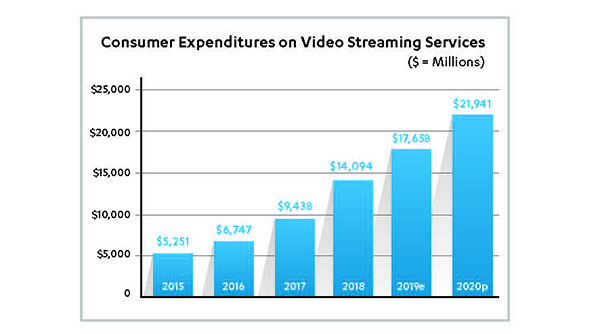 Video continues to comprise over two-thirds of the total revenue for subscription streaming services (music accounts for just under a third) and are predicted to keep increasing at a strong pace for 2020, up 24% to $21.9 billion.
Video continues to comprise over two-thirds of the total revenue for subscription streaming services (music accounts for just under a third) and are predicted to keep increasing at a strong pace for 2020, up 24% to $21.9 billion.
2. Streaming media players unit sales are catching up to traditional set-top boxes.
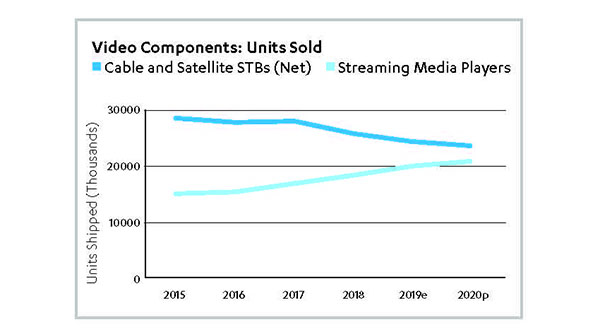 Satellite set-top boxes are experiencing a precipitous decline in units sold, and are predicted to fall in 2020 by 30% from levels seen in 2015.
Satellite set-top boxes are experiencing a precipitous decline in units sold, and are predicted to fall in 2020 by 30% from levels seen in 2015.
By comparison, cable boxes are only seeing moderate declines, down 4% from 2015. Together, traditional set-top boxes (STBs) are forecast to sell 23.7 million units in 2020. Streaming media players (SMPs) will see 20.7 million units sold.
3. Streaming device sales have replaced disc players, but disc legacy remains.
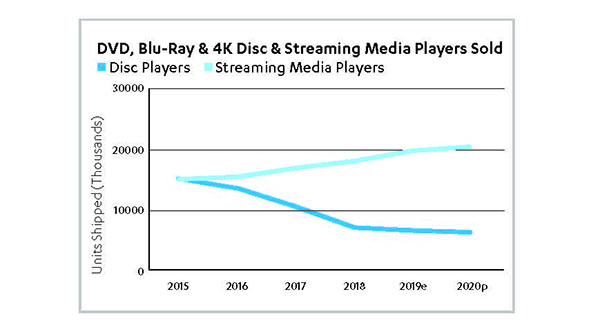 CTA estimates there will be 3.3 streaming media players sold for every DVD/Blu-ray player sold in 2020.
CTA estimates there will be 3.3 streaming media players sold for every DVD/Blu-ray player sold in 2020.
This number was 1.1 in 2016, and it represents the stunning shift in the consumption of streamed, mostly rented (either directly or via a subscription) content, versus the traditional ownership of a physical copy.
4. Smart TVs continue to grow.
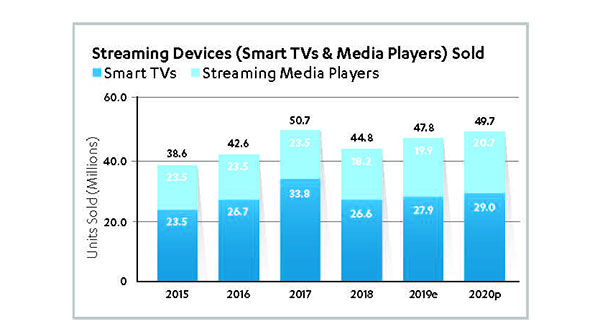 CTA predicts Smart TVs will make up 74% of all new TV sets sold in 2020, up 4% from the estimated total for 2019.
CTA predicts Smart TVs will make up 74% of all new TV sets sold in 2020, up 4% from the estimated total for 2019.
The increase in ownership of these devices has grown from 24% of households in 2014 to 60% in 2019 and are expected to rise again in 2020.
5. 4K is beginning to get big.
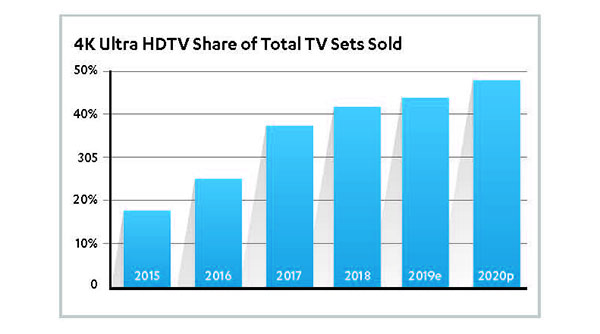 CTA predicts 4K Ultra High-Definition TVs (4K UHD) will make up almost 50% of new TVs sold in 2020, the highest proportion of sales in their history. This represents an increase of 10% on the estimated total for 2019, and it may be due to the average unit price falling for the second straight year.
CTA predicts 4K Ultra High-Definition TVs (4K UHD) will make up almost 50% of new TVs sold in 2020, the highest proportion of sales in their history. This represents an increase of 10% on the estimated total for 2019, and it may be due to the average unit price falling for the second straight year.
6. Gaming is bigger than you think.
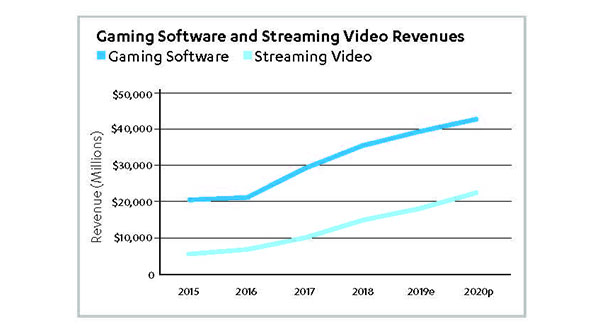 Revenues from video game software continue to rise, with 2020 predicted to bring in double that seen in 2015. For context, the software gaming industry is estimated in 2019 to be 2.2 times as large as subscription streaming video.
Revenues from video game software continue to rise, with 2020 predicted to bring in double that seen in 2015. For context, the software gaming industry is estimated in 2019 to be 2.2 times as large as subscription streaming video.
7. 5G is about to land.
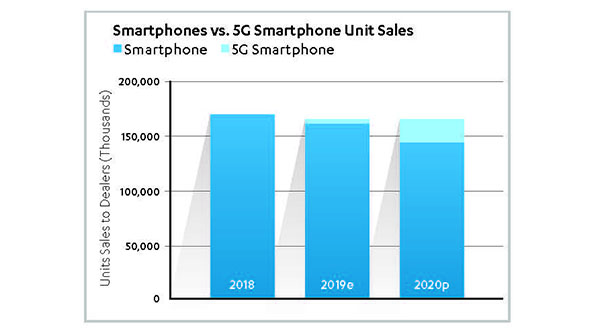 Long promised, 5G internet is arriving. This will have an effect on three key areas:
Long promised, 5G internet is arriving. This will have an effect on three key areas:
- In-home internet.
- Smartphones.
- Entertainment.
8. VR and AR may finally realize their potential.
 The growth in VR/AR eyewear stalled in recent years, following the high of 2016. Growth rates either declined or were sluggish in the years since, but 2020 is predicted to see double-digit growth for the first time in four years.
The growth in VR/AR eyewear stalled in recent years, following the high of 2016. Growth rates either declined or were sluggish in the years since, but 2020 is predicted to see double-digit growth for the first time in four years.
Conclusion
The year 2020 looks set to be another year of disruption for established media and entertainment companies. The emergence of new distribution channels and entertainment formats will create opportunities for innovative new entrants to disturb once-locked markets.



